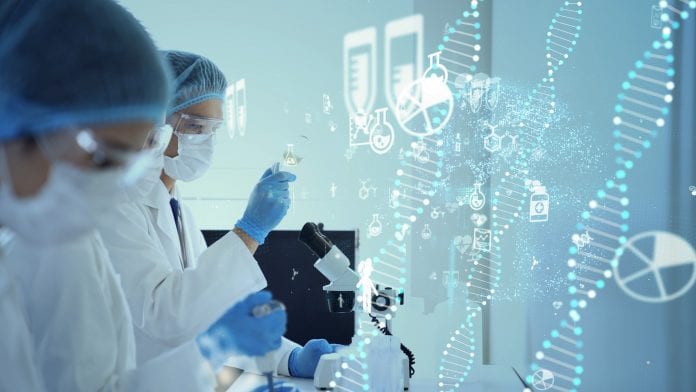
A new gene therapy could offer a cure for a rare degenerative disease in children called Dopamine Transporter Deficiency Syndrome (DTDS).
A team of scientists and doctors from University College London Great Ormond Street Institute of Child Health (UCL GOS ICH) and Great Ormond Street Hospital (GOSH) have recreated and cured the condition using state-of-the-art laboratory and mouse models of the disease. They will soon apply for a clinical trial of the therapy.
The findings from the study have been published in Science Translational Medicine.
What is DTDS?
DTDS is a rare neurological condition that causes progressive dystonia and parkinsonism, so called because of similarities to Parkinson’s disease. It usually begins in infancy; however, some people may not develop symptoms until childhood or later. Infants with DTDS are rarely able to learn to walk or speak. Symptoms include slow movements, involuntary twisting postures of the arms and legs, and whole-body stiffness.
No effective treatments or cure
Currently, there are no effective treatments or a cure for the disorder and most children with DTDS sadly die before reaching adulthood, often from respiratory infections or other complications. Although the condition is rare, with around 50 children worldwide currently known to doctors, it has previously been mistaken for cerebral palsy and may continue to be undiagnosed.
Professor Manju Kurian discovered the faulty gene causing DTDS in 2009 and was subsequently granted seed funding worth just over £86,500 from Great Ormond Street Hospital Children’s Charity (GOSH Charity) to begin developing the treatment. Professor Kurian’s team and her collaborators at UCL have also spent the last decade working to better understand the mechanisms that underpin this disease, and this has enabled them to develop a new, precision gene therapy with the potential to treat this devastating disorder.
How precision gene therapy works
When developing the gene therapy, scientists took skin cells from children with DTDS and turned them into stem cells, which can grow into any type of cell to build or repair different parts of the body. Professor Kurian’s team, with work led by Dr Serena Barral, converted these stem cells into the exact brain cells (dopaminergic neurons) that carry the genetic ‘fault’ responsible for DTDS.
Using this laboratory model made directly from the cells of children with this rare condition, scientists were able to test the experimental gene therapy for DTDS and show that it could relieve the disease-related defects in DTDS brain cells.
The team used fluorescence microscopy to see what was happening in the laboratory model. A seemingly random pattern of colours in the untreated cells demonstrated how the neurons and their communicating ‘arms’ – called neurites – had not formed properly in cells with DTDS. The gene therapy treated cells formed a much more obvious cluster pattern for the neuron, with its red neurites, essentially showing the DTDS is cured in a laboratory model.
A further collaboration with UCL’s Professor Simon Waddington and Dr Joanne Ng enabled the researchers to build on these results, studying DTDS in mice and testing gene therapy as a cure. The gene therapy injects a modified, harmless virus containing the healthy gene into the area of the brain where this gene is missing. The mice were successfully cured of their symptoms including involuntary and disordered movements, progressive parkinsonism, and weight loss. Based on the promising results of the laboratory tests, the next phase is to develop a clinical trial which would involve children diagnosed with DTDS.
Hope for a treatment
Professor Manju Kurian, Consultant Paediatric Neurologist at GOSH and NIHR Research Professor at UCL Great Ormond Street Hospital Institute of Child Health, co-lead author on this study and the scientist behind the discovery of this disease, said: “Our study provides real hope of an effective treatment for children who are living with this devastating, life-limiting brain disease, and it is hugely exciting to be at the stage of planning a clinical trial just ten years after discovering the gene that causes the condition.
“We hope this pioneering gene therapy will prevent the progression of this rare but cruel disease with a single procedure, giving children the improved quality and length of life that they deserve. If we can use gene therapy to treat children with this condition early enough, there is great potential for improvement in their health.”
Professor Simon Waddington, Professor of Gene Therapy at UCL, co-lead author on this study, said: “Our whole working process has been guided by one principle: we want to find the answers for these children and how we can treat them.
“The mice received the same carefully selected vector and delivery route that we plan to use in treating the children. This careful selection has allowed us to progress rapidly to design a protocol so we can start the clinical trial next year.
“While DTDS is rare, we know that there are many other conditions we can model in this way, opening the door for a standardised approach to finding cures for these rare conditions.”







